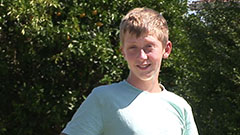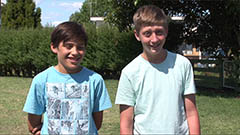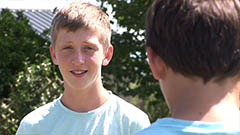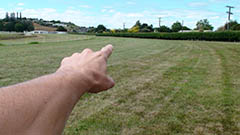Terminology
The the exam, terminology is key to getting high marks like in most exams. In media there are lots of essential terminology that you need to know clearly before going into the exam, with out it, you will struggle to gain marks.
Some of the key words to use in the exam for TV comedy are things like;
*Binary Opposite - The ways opposites are used to create interest in media texts.
*Stereotype - Representation of people or groups by a few characteristics.
*Watershed - The set time at which the adult programmes which may contain rude/violent things is allowed to be shown.
*Institute - A large media corporation or company
*Stripped schedule - This is when a show is running on television at the same time daily.
*Antagonist - The character whose function in a plot is to oppose the protagonist
*CGI - Computer Generated Imagery, refers to the (usally) 3-D effects
*Convention - The widely recognised way of doing something - this has to do with content
*Protagonist - The character who drives the narrative forward, though the choices they make and actions they take
All of the terminology are the most common ones used in exams.
My blogger contains most of my work which I'm doing through my school media at the moment.
Search This Blog
Tuesday 14 April 2015
Monday 13 April 2015
Media Revision - Camera
Camera Shots
There are many different camera angles which are used in shooting films and TV shows, the idea of different camera angles is to give more effect in the show, e,g; a close up shot used to show the intensity of a situation or a extra long shot to represent the actors authority in the situation at because it shows him/her as a small object in a big background that would represent how little power he has over the enemy. The most common types of camera shots used in most films/shows today are;
-Wide shot
The wide shot can be used to show the person and to give an idea about what it is about.

-Mid shot
The mid shows enough detail to be able to remove the bottom half of the person and to show the characters body language which would suggest a certain thing to the audience, eg; in this photo it shows a relaxed body language.

-Medium Close up Shot
The medium close up shows from the chest up and is used when there needs to be more detail in the shot, so they add more of the person in the frame.

-Close up
The close up shot is used to show facial expressions from the character and is shown mainly in tense situations.

-Two-shot
The two shot is used to show two different people in the same scene, and is normally used when interviewing people or when presenting a show with multiple hosts.

-Over the shoulder shot
The over the should shot allows the audience to be the person that is facing away from the camera and is used mainly in TV shows rather than films.

-Point of View shot
The point of view allows the audience to feel like they are there and these types of shots are used in dangerous situations to make the audience feel some sort of danger.

The camera shot used in the film/show depends on what type of genre the show is because if it is a romance, then it would most likely use close ups and panning shots as its slow and gentle which is how romance normally is. Whereas if it was action it would use a lot of wide angle shots to show the scene and the intensity of it with a lot of things happening all in the same scene.
There are many different camera angles which are used in shooting films and TV shows, the idea of different camera angles is to give more effect in the show, e,g; a close up shot used to show the intensity of a situation or a extra long shot to represent the actors authority in the situation at because it shows him/her as a small object in a big background that would represent how little power he has over the enemy. The most common types of camera shots used in most films/shows today are;
-Wide shot
The wide shot can be used to show the person and to give an idea about what it is about.

-Mid shot
The mid shows enough detail to be able to remove the bottom half of the person and to show the characters body language which would suggest a certain thing to the audience, eg; in this photo it shows a relaxed body language.

-Medium Close up Shot
The medium close up shows from the chest up and is used when there needs to be more detail in the shot, so they add more of the person in the frame.

-Close up
The close up shot is used to show facial expressions from the character and is shown mainly in tense situations.

-Two-shot
The two shot is used to show two different people in the same scene, and is normally used when interviewing people or when presenting a show with multiple hosts.

-Over the shoulder shot
The over the should shot allows the audience to be the person that is facing away from the camera and is used mainly in TV shows rather than films.

-Point of View shot
The point of view allows the audience to feel like they are there and these types of shots are used in dangerous situations to make the audience feel some sort of danger.

The camera shot used in the film/show depends on what type of genre the show is because if it is a romance, then it would most likely use close ups and panning shots as its slow and gentle which is how romance normally is. Whereas if it was action it would use a lot of wide angle shots to show the scene and the intensity of it with a lot of things happening all in the same scene.
Subscribe to:
Posts (Atom)